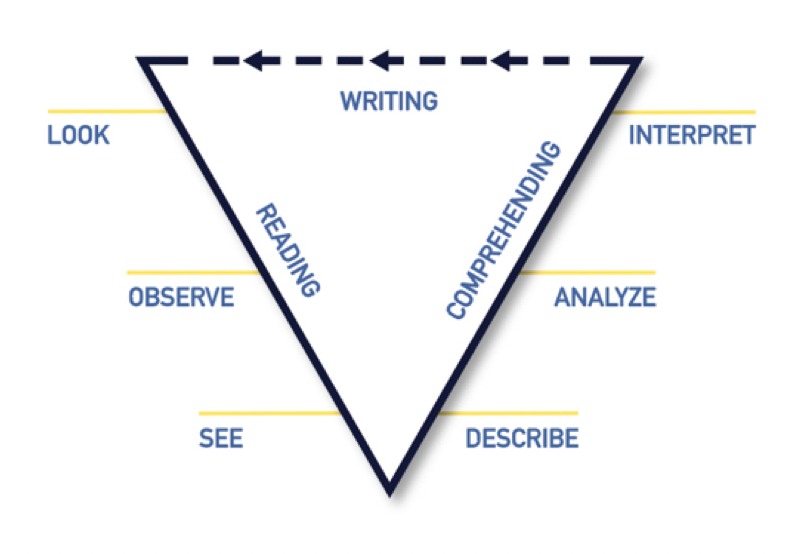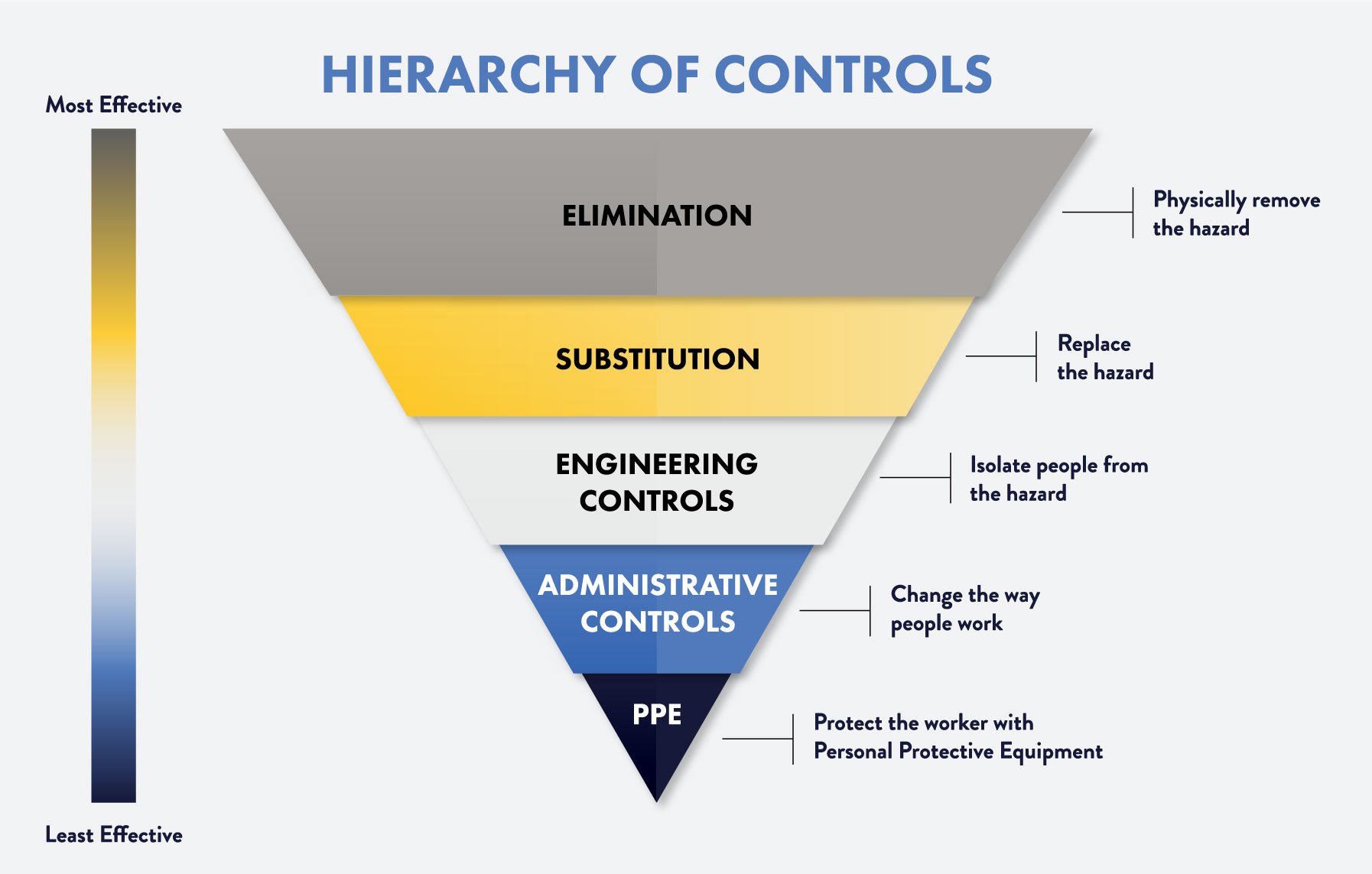A discussion in a recent workshop caused me to reflect on the relationship between our work in Visual Literacy and how it integrates with established practices defined by the Hierarchy of Controls. It is critical that through Visual Literacy we improve our ability to see the hazards that can easily disappear into the background. It is also important that we consider controls that are most effective in eliminating or controlling the hazards we identify. Hence, the importance of the ‘Two Triangles.’
Safety Starts with Seeing
The heart of what we teach in visual literacy is derived from The Art of Seeing Art™ – a process developed and refined by the Toledo Museum of Art. This upside-down triangle (see image 1) moves us from simply looking at an object or an environment, to observing it, and then to truly seeing what is there. A great deal of our focus is on slowing down and avoiding our natural tendency to just looking (or glancing) at something, and immediately drawing an interpretation as to what it means. Some call this jumping to a conclusion. This can often be the reason we overlook things and no longer see them until an incident informs us that they are right in front of us. How many times have you said “I’ve walked by that a thousand times and I never saw it, until……”?
Image 1

Equally important to seeing is how we interpret what we see. This is the right side of the upside-down triangle. This is where we draw meaning from what we see and determine the action that we should (or shouldn’t) take. It is through describing and analyzing what we see that we interpret its meaning and decide what to do as a result.
Let’s think of a real-life example.
We walk into our work environment and begin our daily tasks. We look at the area that we left the prior day, but do we really take the time to slow down and observe and see what might be different? Or do we simply jump to an unconscious interpretation that things are the way they were and go about our normal activities? But what if they are not the same?
- What happens when that uneven surface that has been there forever finally catches the heel of our shoe and down we go?
- What happens if someone has mistakenly removed the caution barrier tape underneath the crane boom?
- What happens if we look at a valve and believe we see it is closed when it is actually open?
Slowing down and moving from looking to seeing, and describing to interpretation, gives us the best opportunity to arrive at meaningful and appropriate actions. This is easily expressed with some modification to the first triangle in the area of hazard identification (see image 2).
It is all about what we see, what it means, and what we do about it!
Image 2

Safety and Effective Controls
Let’s also talk about another triangle that is critically important – the Hierarchy of Controls (see image 3). This illustration from the Centers for Disease Control and Prevention (CDC) highlights the effectiveness of controls. Eliminating a hazard that we have identified through our visual literacy efforts is clearly more effective than just providing PPE to our team members to ’protect’ them. And the range of effectiveness of our choices between Elimination and PPE is noted in the triangle.
I have often heard the analogy that PPE and Administrative Controls are like a block of ice. Solid when first frozen, but without constant reinforcement as they melt away over time!
Image 3

Thinking about our first triangle (The Art of Seeing Art®) in how we can be more effective in what we see and how we draw meaning from what we see combined with the second triangle (Hierarchy of Controls) gives us the best opportunity in hazard recognition to facilitate meaningful actions to protect our people and facilities.
Once we truly see the hazard, we can determine the corrective actions that move us beyond PPE and Administrative Controls and into areas of the triangle that give us greater confidence that the effectiveness of our actions will not ‘melt away.’
Webinar Recording: Eliminating Workplace Hazards: 4 Critical Support Mechanisms to Guide You
In this webinar, COVE looks at how to be more effective in seeing hazards in the workplace and sharing four critical support components for interpreting and acting on the hazards we find.




